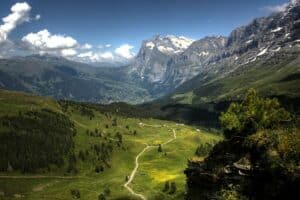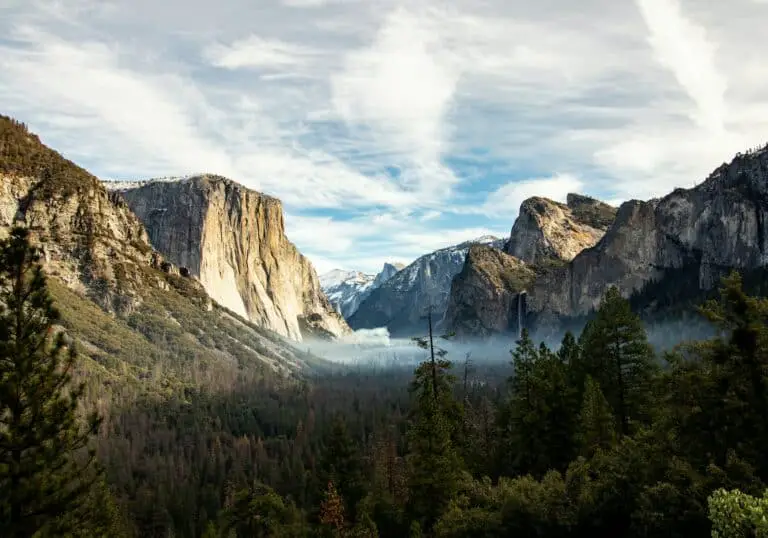Where should I go hiking tomorrow? You’re in the right place. I’ve spent years exploring trails and I’m here to share my insights with you. In this article, we’ll delve into some top-notch hiking spots you might want to consider.
Maybe you’re after a challenging climb, or perhaps a leisurely walk in the woods is more your style. Either way, I’ve got you covered. We’ll discuss a variety of trails, factoring in difficulty, scenery, and location.
So, lace up those hiking boots and let’s get started. By the end of this read, you’ll have a clear idea of where your next adventure should be. Whether you’re a seasoned hiker or a beginner, there’s a perfect trail out there waiting for you.
Factors to Consider when Choosing a Hiking Trail

Picking the right hiking trail is no cakewalk. Several considerations come into play. Isn’t it essential, after all, to ensure your adventure matches your fitness level, interests, and safety needs? Let’s dive into some of the critical factors you should consider.
Difficulty Level and Length of Trail
The trail’s difficulty is important. It’s vital to choose a trail that matches your fitness level and hiking experience. Remember, length isn’t always an indicator of difficulty — elevation gain and terrain play significant roles too.
Scenery and Natural Beauty
When I opt for a hike, I want to immerse myself in stunning natural landscapes. Explore trails that promise picturesque vistas. Scenery can range from serene lakes, spectacular mountain views, lush forests, or even a blend of these enchanting elements.
Location and Accessibility
Where the trail is located is another key consideration. Check whether the trail is easily accessible, whether you drive or use public transportation. Consider proximity to amenities such as restrooms, water sources, and camping spots if you’re planning a multi-day hike.
Safety of the Trail
Safety should never be compromised. Check for information about any potential hazards on the trail — wildlife encounters, loose rocks, steep drops, and so on. It’s also best to see if the trail is well-marked and maintained.
Weather and Season
Finally, it’s essential to consider the time of year and weather conditions. Some trails might be inaccessible during certain seasons due to snow or rainfall. Checking forecast and trail conditions can prevent unpleasant surprises on your hike.
Top Hiking Trails for Beginners

When you’re new to hiking, it’s vital to start on trails that match your current fitness level. There are countless beginner-friendly trails out there that offer a fantastic mix of natural beauty and manageable challenges.
Yosemite Valley Loop Trail, Yosemite National Park, California is a fantastic place to start. It’s a flat, easy loop around Yosemite Valley, and the best part? It offers your first taste of breathtaking views. With the towering granite cliffs and the powerful waterfalls, you’d be hard-pressed to find a more scenic trail for beginners.
Rim Trail, Grand Canyon National Park, Arizona should definitely be on your list. It’s the most accessible trail in the park and offers incredible views of the Grand Canyon. But remember to carry plenty of water and sunscreen because it can get pretty hot.
Over in Oregon, Multnomah Falls Trail is another excellent pick. This trail is relatively short but offers a rewarding view of the stunning Multnomah Falls. Plus, it’s paved all the way, which is a bonus for beginners getting used to terrain.
Heading east, Acadia National Park in Maine has a variety of trails ideal for beginners. The Jordan Pond Path and the Ocean Path are two notable ones. They offer fairly flat terrain and picturesque views of mountains, forests, and the coast.
Now let’s not forget about Great Smoky Mountains National Park, Tennessee and North Carolina. It boasts a variety of trails perfect for novice hikers, like the Laurel Falls Trail and the Cades Cove Loop Road.
It’s important to remember that beginners should take their time, hydrate, and enjoy the experience. Remember, it’s not a race. Everyone’s hiking journey starts somewhere, and these trails are fantastic places to discover the joy of hiking.
Intermediate Level Hiking Trails with Stunning Scenery
Now that we’ve covered beginner-friendly trails, it’s time to hike up the difficulty level a notch. Let’s explore some of the best intermediate trails out there.
If you’re feeling confident after conquering easier treks, The Skyline Trail in Mount Rainier National Park is a perfect choice. This 5.5-mile loop trail offers panoramic views of subalpine wildflower meadows and views of glaciers. Expect to meet marmots and other wildlife on the way. Just keep in mind, the trail elevation rises to over 6,500 feet, so this trek isn’t for the faint-hearted!
Half Dome Trail in Yosemite National Park is another intermediate level hike. It’s a 14 to 16 miles round trip, leading to the iconic Half Dome. The view from the top is worth every step, just make sure you have a permit for the hike.
Slightly more challenging is the Angels Landing Trail in Zion National Park. Now this trail is one that’ll make your heart race. It’s a 5.4 miles round trip with a serious elevation gain of nearly 1,500 feet. Not to mention, the last half mile is a scramble along a narrow ridge, where you’ll need chains for guidance. A trek that’ll make you feel like you’re on top of the world.
If you prefer coastal charm over mountain vistas, there’s The Precipice Trail in Acadia National Park. It’s about 1.5 miles but that’s a steep climb. You’re rewarded with the best ocean views.
In the Rockies, the Emerald Lake Trail in Rocky Mountain National Park is a real show-stopper. Three stunning alpine lakes await as you undertake this 3.1-mile trail with a 650 feet elevation gain.
Always remember, these hikes are more strenuous than beginner trails, so they require more preparation and fitness levels. Listen to your body when hiking. There’s no ‘best trail’, only the one that fits your experience and comfort level. So, don’t rush, take your time, and savor the journey as much as the destination.
You may also want to equip yourself with essential hiking gear like trekking poles, hydration packs, and sturdy footwear. Preparedness and safety always come first on the trail. And of course, take plenty of photos! These trails offer some of the best
Advanced Hiking Trails for Experienced Hikers

The next level in our hiking journey are the advanced trails. These are for the experienced hikers who thrive on challenge and crave elevation. Sitting just on the cusp of professional mountaineering, advanced trails will test your limits. It’s not just the hunger for adrenaline that makes me suggest these trails, but the experience of nature in its most profound form is the real lure.
One trail that grabs my attention every time is the Longs Peak Trail in the Rocky Mountain National Park. It spans 15 miles round trip with an elevation gain of 5,100 feet. What sets this trail apart is its sheer length and the Keyhole route – a boulder field where a spotter’s keen eye is necessary!
Another such trail is the Grand Canyon Rim-to-Rim Trail, which I personally consider one of the true tests of hiking prowess. Not for the faint-hearted, this trail encompasses a descent into the heart of the canyon, a journey across the valley floor, and then a grueling ascent to the other rim. Covering 24 miles and dealing with a temperature change of over 30 degrees, this hike is a marathon in its own right.
But for those who need a taste of the extreme, nothing beats the vicious cliffs of the Kalalau Trail in Hawaii. With only the hardened surviving this 22-mile round trip, this trail is notorious for its razor-sharp cliff drops and narrow pathways. A successful hike rewards you with a secluded beach and a sense of accomplishment that is second to none.
Now the big question – are you ready for these advanced hiking trails? Always remember, preparation is key. The more strenuous the trail, the more essential it is to carry the right gear, have a well-planned route, and listen to your body. Push your limits but respect nature along the way. Now it’s time to lace up those hiking boots and hit the trail.
Hiking Trails with Different Types of Terrain
Terrain variance plays a crucial role in your hiking experience. A trail with varied terrain can be a rewarding challenge – throwing in a bit of everything, from rocky inclines to sandy paths or dense woodland. Let’s dive deeper and explore some famous trails specified by their unique terrains.
Mountain Trails: Undoubtedly, they offer breathtaking panoramas and a solid workout. Trails like Angel’s Landing in Zion National Park or Half Dome in Yosemite are perfect examples. While they require a good fitness level, the effort’s repaid with stunning – almost surreal – vistas.
Forest Trails: Homage to Mother Nature’s artistic prowess – dense forests! Trails such as the Emerald Lake Trail in Rocky Mountain National Park wind through vast woodland. The sounds of nature and the sheer, towering grandness of the trees offer a humbling hiking experience.
Coastal Trails: If you’re a beach lover, coastal trails offer a blend of sea breeze and moderately challenging trails. A prime example being the Kalalau Trail in Hawaii. It traverses along the coast, offering hikers an entirely unique experience.
Desert Trails: And for those wanting to experience the vast, open emptiness, desert trails await. A segment of the Rim-to-Rim Trail in the Grand Canyon will give you just that – invigorating vastness surrounded by spectacular land formations.
Conclusion: Where Should I Go Hiking Tomorrow
So, where should you go hiking tomorrow? It all depends on your skill level and preference for scenery. If you’re an intermediate hiker, consider the Skyline Trail in Mount Rainier National Park, or the Half Dome Trail in Yosemite. For those seeking a challenge, the Longs Peak Trail in Rocky Mountain National Park or the Grand Canyon Rim-to-Rim Trail could be your next adventure.
Remember, different terrains offer unique experiences. Mountain trails, forest trails, coastal trails, or desert trails; each has its own charm. It’s all about what you’re looking for in your hike.
Whatever trail you choose, preparation is key. Listen to your body, respect the trail, and most importantly, enjoy the journey. The beauty of hiking is not just about reaching the destination, but also about immersing yourself in the journey. So lace up your boots, pack your bag, and hit the trail. The great outdoors is waiting for you!
Other suggested articles:


